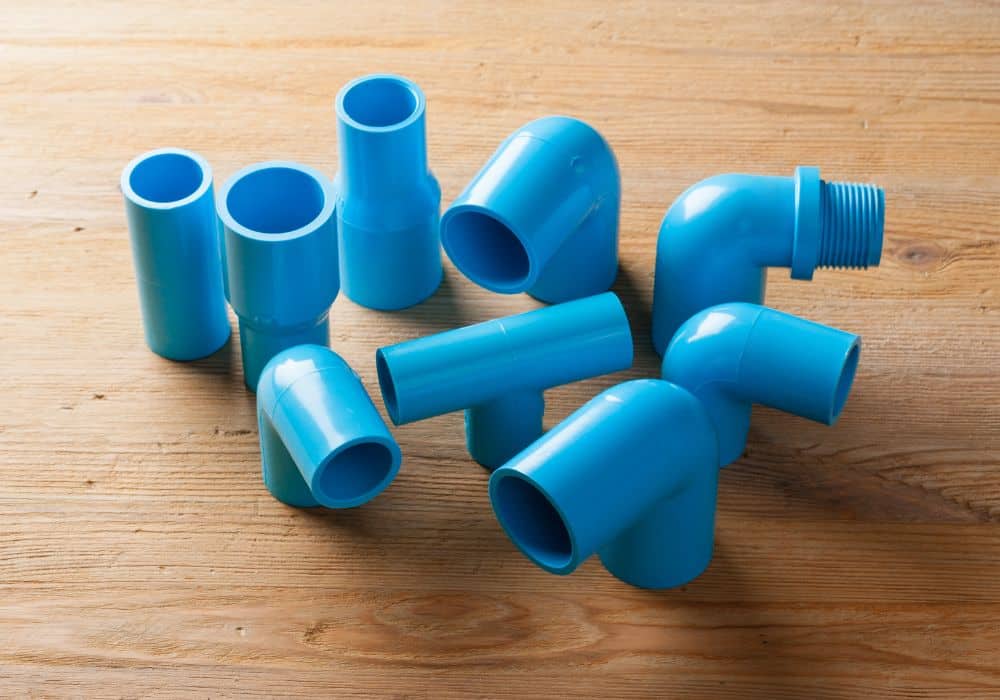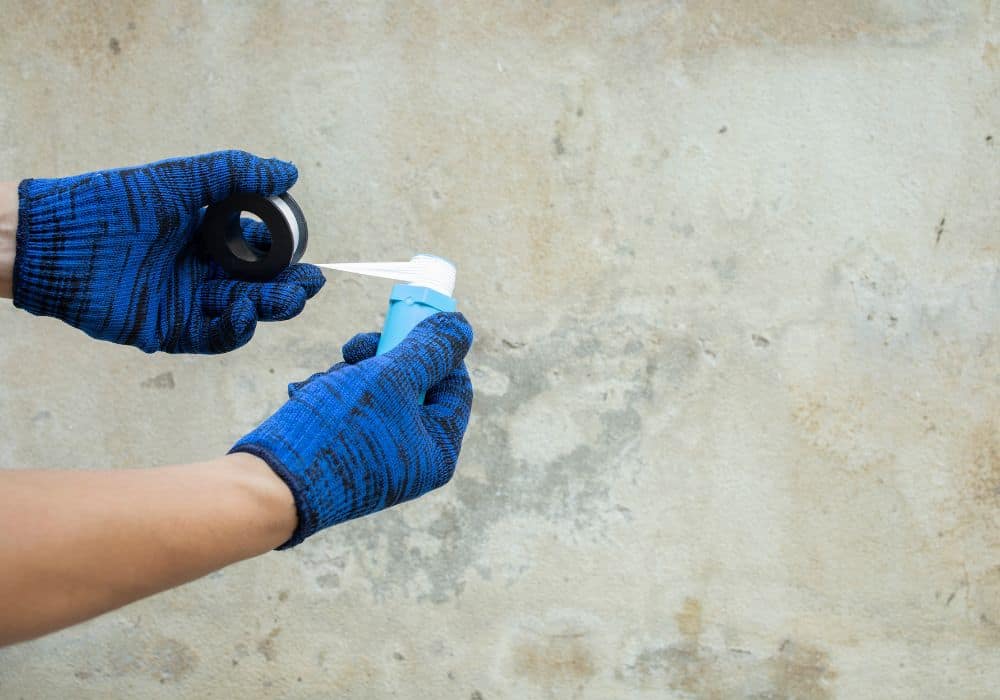Did you look at your plumbing system and find yourself confused about the different pipes and how to connect them properly?
If you’ve been tasked with connecting threaded PVC pipe, we know that it can be a daunting task. It’s not just the sheer number of fittings involved—it’s also a matter of making sure the connections are tight enough to withstand pressure from the water flow and the weight of whatever you’re connecting them to.
In this article, we will explain how to connect threaded PVC pipe as well as give you some tips on how to do it correctly.
Why choose threaded PVC pipe for your project?
The term “threaded” refers to the fact that these pipes have a male thread on one end and a female thread on the other. The male thread is used to connect the two ends, but it also allows you to screw them into different objects. This gives you a lot more flexibility when it comes to how you can use these pipes—which is pretty handy.
There are lots of reasons why people choose threaded PVC pipes over other forms. For example, they’re easier to install because they don’t require any special tools or skills. They’re also easy to clean because they don’t hold any dirt or debris inside them—so they’re great for outdoor applications where there’s a lot of mud around! And finally, they’re extremely durable.
This guide has a list of all the most used pipes and what could be the best for what you want to do.
Instruction for connecting threaded PVC pipes

Quick run-up:
- Get your pipes ready and clean
- Cut your pipes
- Pick the right thread sealant
- Choose your PVC threads
- Seal the threaded PVC pipes together
- Tips for the perfect assembling of your pipes
- Test your pipes for any leaks
1. Get your pipes ready and clean
PVC pipes are an inexpensive way to connect your plumbing fixtures. They are easy to install, and they’re made of a durable plastic material that doesn’t rust or corrode. You can find threaded PVC pipes in a variety of colors and gauge sizes, so you can choose the right size for your application.
First, get the pipes ready by cleaning them with warm water and soap. If you’re in a hurry and don’t have time to give each pipe a quick scrub with soap and water or an enzymatic cleaner, then you can try another method.
Use a wire brush on the inside and outside of each pipe. The bristles should be soft enough that they won’t damage the surface but firm enough that they won’t leave behind any rough edges after they’re done brushing away dirt and corrosion buildup.
2. Cut your pipes
Now, you’ll need to cut the pipes to fit the threaded PVC, because they don’t always line up perfectly. You can use a pipe cutter or saws, but most people prefer a hacksaw. If you’re looking for a hacksaw, make sure it has an adjustable blade, because that’s what you’ll need in order to cut through both the pipe and the threads on the end of it.
If your hacksaw doesn’t have an adjustable blade, try using one with a firm grip and steady hand; this will help ensure that you don’t accidentally slip and hurt yourself while doing this job.
3. Pick the right thread sealant
When you’re connecting threaded PVC pipes, you want to make sure that they’re sealed properly. If not, water will leak in and cause extensive damage. The best way to ensure that your pipes are watertight is by using a sealant.
When you’re working with threaded PVC pipes, you’ll want to make sure that the sealing compound you use is compatible with the pipe and that it doesn’t contain solvents. You can find this information in the instructions for your particular glue or sealant.
There are several brands of pipe sealant for different situations:
a. Teflon tape
The most common one is called Teflon tape. However, this type of tape isn’t very effective at sealing pipes—especially when it comes to PVC pipe joints. It’s also extremely flammable, so it should be avoided if possible.
b. Solvent cement
If you want something that will hold up under high water pressure and be resistant to chemicals in your water supply, then look for a solvent cement that is made from neoprene rubber or nitrile rubber (which is available in black). These materials are ideal because they can handle high temperatures without melting or softening—and they won’t get brittle like vinyl or PVC would if exposed to contaminants or condensation.
If you are still unsure, this video by Ewing Irrigation & Landscape Supply will help you pick the best sealant for the type of job you need, and also let you know how to use them for all types of pipes.
4. Choose your PVC threads
Now you need to find out which kind of male pipe thread adapter fits with your female fitting thread adapter so that it will work correctly when screwed together and appropriately sealed for your pipe diameter.
Threaded PVC fittings are the same as regular PVC fittings, except they have threads on them instead of flat heads. These fittings can be used for any type of plumbing project—from connecting sinks to connecting showers to connecting sinks and baths.
There are three different styles of threaded PVC fittings:
- female threads
- male threads
- cross-threaded (or CV)
Each one works differently than the others and has its own advantages and disadvantages.
There are three different styles of fitting:
- 1/2″ NPT
- 3/4″ NPT
- 1-1/4″ NPT
The main difference between the three is that 1/2″ NPTs have a larger diameter than 3/4″ and 1-1/4″ fittings. There are many reasons why you might want to use a particular style of threading for your projects—for example, if you’re replacing an old pipe with new PVC piping—but the most common reason is that it fits your application better.
5. Seal the threaded PVC pipes together

Now all you have to do is apply the sealant to one end of the pipe, then apply pipe dope over that and let it dry for 15 minutes before applying the second layer of sealant over the top of it all and letting that dry for another 15 minutes.
Then simply connect them together by twisting them together tightly until they’re tight enough to hold their shape without any further adhesive being required (or even possible).
6. Tips for the perfect assembling of your pipes
There are a few reasons why your pipe’s connections might fail, but if you follow this advice, your threaded PVC pipes will be good for many more years to come.
- Don’t tighten your joints too much, even if it seems like the right idea. Do a finger-tightening maneuver plus one or two spins, then stop before applying too much strain.
- Don’t use too much force – You need enough grip on the pipe so that it doesn’t slip out of your hands or bend under pressure. If your grip is too tight, this will cause excess friction which can cause damage over time.
- When it comes to gluing them, avoid covering the junction with Teflon tape, Teflon paste, or pipe dope, as plastic doesn’t need lubrication.
- Use a sealant or PVC cement that’s specifically made for your type of pipe. If you have to choose between Schedule 80 threaded fittings and Schedule 40, pick the least strong one. Picking the strongest one won’t work as well and won’t actually seal them better.
7. Test your pipes for any leaks
Once the installation is complete, it is time to make sure that everything is working properly. Before that, let your adhesive dry for a few hours just to be sure. Check for any leaks by taking a small amount of water and letting it run through the pipe.
If you notice any leaks, don’t try to patch them up. Disassemble the pipes and connect them again more carefully. This way you know your job will last and you won’t have to patch them again continuously.
Conclusion
Threaded PVC pipes can be used in many different ways—as they come in standard lengths, they can be used as general-purpose piping and plumbing fixtures such as faucets, showers, and toilets. They can also be used outside of your house if you have an irrigation system or sprinkler system installed there.
When you’re connecting threaded PVC pipes, you want to make sure that they’re sealed properly. If not, water will leak in and cause extensive damage to your irrigation system. The best way to ensure that your pipes are watertight is by using a proper sealant.
